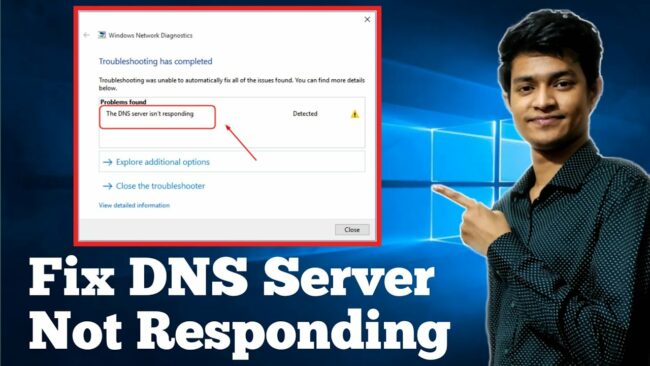Cloud hosting has become increasingly popular in recent years, providing businesses with the flexibility, scalability, and cost-effectiveness they need. However, integrating cloud hosting into existing infrastructure can feel overwhelming. In this article, the ten easy steps to seamlessly integrate cloud hosting will be outlined, offering businesses a clear roadmap to ensure a smooth transition. From assessing current infrastructure to selecting the right provider and migrating data, this comprehensive guide will help businesses leverage the benefits of cloud hosting with minimal disruption.
Step 1: Determine Cloud Hosting Needs
Before considering the integration of cloud hosting, it is essential to determine the specific needs of your organization. This involves evaluating your current infrastructure, understanding your business requirements, and identifying the benefits you hope to achieve by adopting cloud hosting.
Consider factors such as the amount of data you need to store and process, the level of scalability required, and the budget you have allocated for cloud services. By clearly defining your cloud hosting needs, you can ensure that you choose the right provider and design an effective migration strategy.
Step 2: Research Different Cloud Hosting Providers
The next step in integrating cloud hosting is to research and compare different cloud hosting providers. There are numerous options available in the market, each offering various features, pricing models, and levels of service.
To make an informed decision, evaluate providers based on their reputation, reliability, and performance. Consider factors such as the availability of customer support, the geographical coverage of their data centers, and the compatibility of their services with your existing infrastructure.
Step 3: Assess Security and Compliance Requirements
Security and compliance are critical considerations when integrating cloud hosting. Assess your organization’s security requirements and compliance obligations to ensure that the cloud hosting provider you choose can meet these needs.
Evaluate the provider’s infrastructure security measures, including encryption standards, firewalls, and access controls. Additionally, consider their compliance certifications and industry-specific regulations they adhere to. A robust security and compliance framework will help protect your data and ensure the privacy and integrity of your business operations.
Step 4: Choose the Right Cloud Hosting Provider
After conducting thorough research and assessing security and compliance requirements, it’s time to choose the right cloud hosting provider. Several factors should guide your decision-making process.
Evaluate Performance and Reliability
Performance and reliability are vital aspects to consider when selecting a cloud hosting provider. Look for guarantees of high uptime and minimal downtime. Assess the provider’s infrastructure, server capabilities, and network connectivity to ensure that they can meet your performance expectations.
Consider Scalability and Flexibility
Scalability and flexibility are key advantages of cloud hosting. Choose a provider that can scale resources, such as storage and processing power, to match your organization’s evolving needs. Also, evaluate their ability to accommodate unexpected increases in demand and provide seamless integration with your existing systems.
Analyze Service Level Agreements (SLAs)
Service Level Agreements (SLAs) outline the responsibilities and expectations between the cloud hosting provider and your organization. Analyze the SLAs provided by different providers to understand the level of service and support they offer. Pay attention to factors such as data availability, response times for support requests, and compensation provisions for any service disruptions.
Examine Data Storage and Backup Options
Data storage and backup are crucial components of any cloud hosting solution. Evaluate the provider’s data storage options, including redundancy and data replication mechanisms. Additionally, assess their backup and disaster recovery capabilities to ensure the safety and accessibility of your data in the event of data loss or system failure.
Step 5: Plan the Migration
Planning is vital for a successful cloud hosting integration. This involves identifying critical applications and data, developing a migration strategy, creating a migration plan, and allocating appropriate resources for the migration process.
Identify Critical Applications and Data
Identify the applications and data that are essential to your organization’s operations. Evaluate their compatibility with the cloud environment and prioritize their migration based on their criticality and complexity. Consider dependencies between different applications and ensure that all necessary components are accounted for in the migration plan.
Develop a Migration Strategy
Develop a detailed migration strategy that outlines the sequence of migrating applications and data to the cloud. Consider factors such as the availability of resources, potential disruptions to business operations, and any regulatory requirements that need to be met during the migration process. A well-defined strategy will help minimize downtime and ensure a smooth transition to the cloud.
Create a Migration Plan
Create a comprehensive migration plan that outlines the specific tasks, timelines, and responsibilities associated with each stage of the migration process. This plan should include steps for data migration, application deployment, testing, and validation. Regularly communicate the plan to all stakeholders involved to ensure alignment and minimize any potential disruptions.
Allocate Resources for the Migration Process
Allocate the necessary resources, including personnel, time, and budget, for the successful execution of the migration plan. Ensure that the team responsible for the migration is adequately trained and equipped with the skills needed to handle the transition. Regularly monitor the progress of the migration and make any necessary adjustments to ensure a seamless integration.
Step 6: Prepare Your Infrastructure
Preparing your infrastructure is crucial to ensure a smooth transition to cloud hosting. This involves upgrading hardware and software components, optimizing network connectivity, ensuring compatibility with the chosen cloud platform, and performing data cleanup and optimization.
Upgrade Hardware and Software
Evaluate your existing hardware and software infrastructure to identify any components that need upgrading or replacement to align with cloud hosting requirements. Ensure that your systems meet the minimum specifications recommended by your chosen cloud provider.
Optimize Network Connectivity
Establish reliable, high-speed network connectivity to ensure seamless access and communication with your cloud hosting environment. Assess your network infrastructure and make any necessary adjustments, such as upgrading network hardware or optimizing network configurations, to achieve optimal performance and reliability.
Ensure Compatibility with Cloud Platform
Ensure that your existing applications, databases, and systems are compatible with the chosen cloud hosting platform. Test the compatibility of your software and resolve any potential compatibility issues beforehand to avoid disruptions during the migration process.
Perform Data Cleanup and Optimization
Before migrating data to the cloud, perform data cleanup and optimization to eliminate redundancy and ensure data integrity. This includes organizing data repositories, removing duplicate or outdated data, and optimizing data structures and formats for efficient processing and storage in the cloud environment.
Step 7: Set Up the Cloud Environment
Setting up the cloud environment involves creating cloud accounts and permissions, configuring networking and security groups, provisioning virtual machines and storage, and installing required software and dependencies.
Create Cloud Accounts and Permissions
Create the necessary cloud accounts and establish appropriate permissions and access controls for different stakeholders within your organization. This helps ensure that only authorized personnel can access and manage the cloud environment.
Configure Networking and Security Groups
Configure networking and security groups within the cloud environment to establish secure communication channels and control access to resources. Define firewall rules, network subnets, and routing configurations to create a secure and isolated environment for your applications and data.
Provision Virtual Machines and Storage
Provision virtual machines and allocate storage resources based on the requirements identified in the migration plan. Ensure that these resources are scalable to accommodate future growth or changing demands. Follow best practices provided by the cloud hosting provider to optimize resource allocation and utilization.
Install Required Software and Dependencies
Install the necessary software and dependencies within the cloud environment to support the applications and services you plan to migrate. This includes configuring web servers, databases, middleware, and any other components required for your applications to function properly.
Step 8: Migrate Applications and Data to Cloud
Migrating applications and data to the cloud is a critical step in the integration process. It involves transferring data to cloud storage, replicating applications and databases, and thoroughly testing and validating the migration.
Transfer Data to Cloud Storage
Transfer your data from the on-premises infrastructure to the cloud storage service. This can be done through secure data transfer protocols or by leveraging data migration tools provided by the cloud hosting provider. Ensure the integrity and consistency of the data during the transfer process.
Replicate Applications and Databases
Replicate your applications, databases, and associated configurations within the cloud environment. This may involve deploying virtual machines, setting up database instances or containers, and configuring application-specific settings.
Test and Validate the Migration
Thoroughly test and validate the migrated applications and data to ensure their functionality and performance in the cloud environment. Conduct comprehensive testing to identify and address any issues or discrepancies before transitioning to full production mode. This includes testing application functionality, data integrity, and performance under different load conditions.
Step 9: Optimize Cloud Environment
Optimizing the cloud environment is an ongoing process to ensure optimal performance, resource allocation, and disaster recovery capabilities. Continuous monitoring and optimization, implementing resource allocation and scaling strategies, and configuring backup and disaster recovery mechanisms are key aspects of this step.
Continuous Monitoring and Optimization
Implement a robust monitoring and optimization strategy to monitor the performance and usage of the cloud environment. This includes tracking resource utilization, identifying bottlenecks or performance issues, and optimizing resource allocation based on changing demands.
Implement Resource Allocation and Scaling
Implement resource allocation and scaling strategies to optimize resource utilization and accommodate fluctuations in resource demands. This may involve automated scaling mechanisms, load balancing configurations, and optimizing cloud resource costs through right-sizing and allocation policies.
Backup and Disaster Recovery Configuration
Configure backup and disaster recovery mechanisms to protect your data and ensure business continuity in the event of data loss or system failures. Utilize the backup and recovery features provided by your cloud hosting provider and establish regular backup schedules. Test the restore process periodically to ensure data recoverability.
Step 10: Train Your Team and Start Using Cloud Hosting
The final step in integrating cloud hosting is to train your team and start utilizing the cloud environment. Provide comprehensive training and documentation to familiarize your team members with the new cloud infrastructure and its capabilities.
Provide Training and Documentation
Train your team members on how to use and manage the cloud hosting environment. This includes educating them on access controls, security best practices, and available resources for troubleshooting and support. Provide comprehensive documentation that outlines the necessary procedures and guidelines for utilizing the cloud infrastructure effectively.
Ensure Collaboration and Communication
Promote collaboration and effective communication among team members in the cloud environment. Encourage the use of collaboration tools, such as shared document repositories and project management platforms, to facilitate seamless collaboration and information sharing.
Monitor Performance and User Experience
Continuously monitor the performance of the cloud hosting environment and gather feedback from users to ensure optimal performance and user experience. Regularly assess the effectiveness and efficiency of your cloud infrastructure and make necessary adjustments to meet evolving business needs.
Keep Up with Updates and Security Patches
Stay up to date with the latest updates and security patches provided by your cloud hosting provider. Regularly review and apply these updates to ensure the integrity and security of your cloud infrastructure and protect against potential vulnerabilities.
In conclusion, integrating cloud hosting requires careful planning, research, and implementation across various steps. By following these ten steps, organizations can successfully leverage cloud hosting to enhance their operations, improve scalability, and achieve cost-efficiency.








